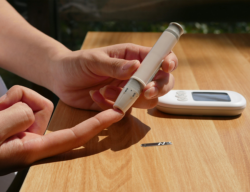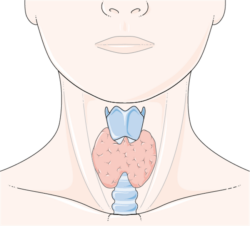Do Hormones Matter with Clinical Trials Research?
I am repeatedly struck by the avoidable ignorance that surrounds this industry. Women’s hormones are considered a fringe science by many, despite the fact that hormones modulate all bodily functions and impact all aspects of pharmacokinetic and pharmacodymanic response, the key variables evaluated in clinical trials research. Repeatedly, we face the assumption that hormones make no difference to women’s health – quite ironic since simultaneously hormones are blamed for everything from migraines to mental health.
And then there is the long held notion that we don’t need any more data in women’s health – quite striking considering only 30% of Ob/Gyn clinical practice guidelines are based on data. Just the other day, a well-positioned female physician, one of the fewer than 4% female healthcare executives, argued that while what we doing was interesting, it was unnecessary because the 1993 Gender Guidelines ‘mandated’ women be included in clinical trials.
Perhaps some history is in order. Until 1993, women of ‘childbearing potential’ were prohibited from participating in clinical trials research. This means that all of the drugs developed before 1993 (most are still being used today) were not tested on women; any potential dosing differences, sex- specific side-effects could not be found until after the drug reached the market and even then it was and is difficult to ascertain because sex-specific analytics were not, and are still not, routinely performed. This makes proving sex-based adverse events all but impossible.
In 1993, thanks in large part to efforts of the first large group of women to enter the US Congress (women in Congress matter); the FDA removed its prohibition against women with childbearing potential participating in clinical trials. The regulations, however, were not established until 1998 and what was implemented, though an improvement over the earlier prohibition of women in clinical trials was less specific than the original guidelines and resulted in less than satisfactory results. When those regulations are evaluated alongside industry trends over the last decade, it becomes abundantly clear why women suffer disproportionately from adverse events compared to men and why everyone in the healthcare industry should be concerned.
From Proposed Guidelines to Regulation
The 1993 guidelines recognized that women might process and react to drugs differently than men (indeed they do and this has been shown repeatedly) and therefore, it was recommended that pharmacokinetic studies be done to evaluate the difference in drug absorption, distribution, metabolism and excretion. It was further recommended that menstrual status, hormonal supplementation (oral contraceptives, HRT and the like) be evaluated.
The FDA was quite clear in its ability to mandate these changes – there was none. Indeed, all that was possible was suggestion.
The agency recognizes that this change in FDA policy will not, by itself, cause drug companies or IRBs to alter restrictions they might impose on the participation of women of childbearing potential. We do not at this time perceive a regulatory basis for requiring routinely that women of childbearing potential be included in particular trials, such as phase 1 studies. However, careful delineation of drug effects by gender is expected by the agency and the FDA is determined to remove the unnecessary federal impediment to the inclusion of women at the earliest stages of drug development. The agency is confident that the ethical, social, medical, legal and political forces will allow greater participation of women at the earliest phases of drug development.
So, the FDA was confident that ethical and social pressures would convince pharmaceutical companies to do the right thing. How well has that gone? The guidelines also indicated that it was not necessary to include women in phase 1 or 2 trials because there was no evidence to suggest sex differences in drug effectiveness:
Because documented demographic differences in pharmacodynamics appear to be relatively uncommon, it is not necessary to carry out separate pharmacodynamic – effectiveness studies in each gender routinely.
To summarize, data were never collected in the first place to suggest sex-differences might exist (remember before 1993, women were prohibited from participating in clinical research) and because there were no data to suggest a sex-differences, there was no need for additional data – makes perfect sense to me.
Fortunately, the National Institute of Health (NIH), the federal funding agency for health-related research, took the reins with a clear mandate – no funding unless the study included women in clinical research. The NIH Revitalization Act of 1993, followed by updates and regulations in 1994, 2000 and 2011, mandated that all NIH funded clinical trials have sample sizes adequate to support ‘valid analysis’ of gender and racial subgroup effects. Unfortunately, however, NIH-sponsored clinical trials represent only 20% of all clinical trials. The remaining 80% are sponsored by pharma and fall under the FDA’s guidelines. And even though, by all accounts the NIH has done substantially better than the FDA, a recent report by the National Heart, Lung and Blood Institute (NHLBI) – a sub agency of the NIH, found that in clinical trials between 1997 and 2006 where the outcome of the study was stroke, myocardial infarction or death found that women represented only 27% of trial participants and only 13-19 of the studies included sex-based analyses.
Back to the FDA Regulations
In 1998 and 2000, the FDA officially instituted the Guidance for Industry, requiring all new investigation drug (IND) and new drug application (NDA) submissions include data on trial participation, efficacy and safety, be presented by age, race and sex. A report in 2001 by the General Office of Accounting (GAO) (no further GAO reports could be found on this topic) evaluated the success and failures of the gender guidelines. It wasn’t pretty:
The 1998 regulation has the force of law, but it is less specific than the 1993 guidance. The regulation required that safety and efficacy data already collected be presented separately for men and women in new drug application summary documents. It does not include criteria for determining the number of women to be included in clinical studies, nor does it require any analysis of the data presented. The 1998 regulation also requires the tabulation of the number of study participants by sex in investigational new drug annual reports. The regulation enacted in 2000 allows FDA to halt research programs for drugs for life-threatening conditions if otherwise eligible men or women are excluded from participation in studies based solely on their reproductive potential, but it does not require inclusion of any particular number of men or women.
How well did the FDA do in meeting and enforcing the guidelines? According to the GAO:
- NDA and IND summary documents and annual reports often failed to meet the data presentation requirements
- 30% the new drug application summary documents submitted to FDA by drug sponsors did not fulfill the requirements for the presentation of available safety and efficacy outcome data by sex
- 39% of IND annual reports did not include demographic information
- The FDA has the authority to suspend proposed research for life-threatening conditions if men or women are excluded, but has not yet done so
As a result of the non-enforcement, the GAO found that although the number of women in clinical trials now averaged 52%, most were enrolled in later stages of the trial. Women represented only 22% of early phase clinical trials. This is where most of the safety and dosing considerations are determined.
Finally, and perhaps the most troubling aspect of this report was that, the FDA had no procedures in place to evaluate, manage or enforce the regulations. As a result, they had no way of knowing whether women were included in the trials in sufficient numbers or whether the medications or devices gaining approval had gender-specific safety issues.
What does this mean?
For all drugs and devices approved before the 1998-2000 regulations and likely many years after, the safety and efficacy data were lacking for women. Despite the 52% female participation number that is bandied about as proof positive that women are represented sufficiently in clinical trials, that number reflects later phase trials, after safety and efficacy parameters are established. In the early phase trials, the number of female participants remains at a paltry 22%. Today, when large women-only (Women’s Health Initiative and Women’s Health Study) research are removed from the tabulations, the mean proportion of women included in all clinical trials hovers around 27%.
Most recently, the Institute of Medicine (IOM) Committee of Women’s Health Research reports a continued lack of
taking into account of sex and gender differences in the design and analysis of studies, lack of reporting on sex and gender differences, has hindered identification of potentially important sex differences and slowed the practice in women’s health research and its translation into clinical practice.
And although the IOM reports that the most progress has been made in cardiovascular research, the NHLBI and Cochrane Reports suggest otherwise. The NHLBI found female participation hovering around 27% in certain cardiovascular trials and Cochrane Reports found that out of 258 clinical trials, only 196 included women and only 33% of those reported sex or gender analytics.
Cardiovascular disease is the most common cause of death in American women and in recently recalled medications for heart disease there were disproportionately higher fatalities and serious adverse events in women than in men.
With high risk cardiac devices, a recent review of FDA pre-market approved devices from 2000 – 2007 (78) found significant gender bias in sampling and data reporting and significant lack of sex-specific safety data.
- FDA summaries did not report gender data in 28% of studies examined
- For studies reporting gender distribution, 67% of the participants were men
So, the suggestion that additional data in women’s healthcare are not needed is unquestionably false and dangerously ill-informed. The notion that hormones, which regulate every aspect of pharmacokinetics and pharmacodynamics are an irrelevant and a fringe science, is ignorant bordering in negligent. It is time for women to stand up and demand inclusion and analytics by sex for all drugs and devices.
Postscript: NIH Update 2014
Since this article was first published in February 2013, the NIH has made inroads towards more thorough assessment of the role of sex in basic, pre-clinical research. Recognizing the almost total reliance on male animals and cells in preclinical research obscures key sex differences that should guide clinical studies, the NIH instituted new guidelines in October 2014
…that require applicants [for NIH grant funding] to report their plans for the balance of male and female cells and animals in preclinical studies in all future applications, unless sex-specific inclusion is unwarranted, based on rigorously defined exceptions.
It remains to be seen how rigorously these new guidelines will be enforced and whether they will impact health research in any discernible way.
Postscript: Update 2019
From a recent 10 year follow-up study assessing sex-inclusive research practices of journal articles published within nine of the biological disciplines, including pharmacology, researchers found some improvement in most of the disciplines, except pharmacology. Compared to 2009, where only 29% of the studies reviewed included male and female subjects, in 2019, 49% included both. In contrast however, pharmacology trended downward with only 29% of articles reporting the use of both sexes in 2019 compared to 33% in 2009. Nevertheless, even though more women were included in more research studies across the disciplines reviewed, few researchers thought it was important to analyze sex based differences. Indeed, of the 49% of journal articles that included both sexes in 2019, only 42% analyzed data by sex, compared to 50% in 2009. Ironically, in pharmacology although the total number of women decreased in studies during this time period, analyses of sex based differences was more frequent increasing from 19% in 2009 to 48% in 2019.
Overall, it appears that we have yet to make much progress.
We Need Your Help
More people than ever are reading Hormones Matter, a testament to the need for independent voices in health and medicine. We are not funded and accept limited advertising. Unlike many health sites, we don’t force you to purchase a subscription. We believe health information should be open to all. If you read Hormones Matter, like it, please help support it. Contribute now.
Yes, I would like to support Hormones Matter.
Image credit: Joshua Coleman, Unsplash.
This article was first published in 2013.














